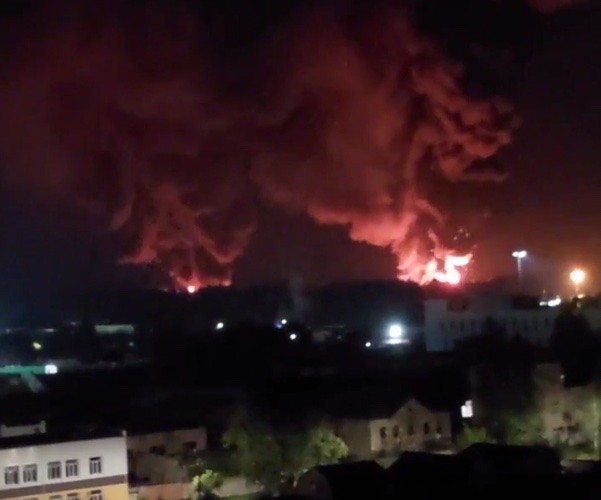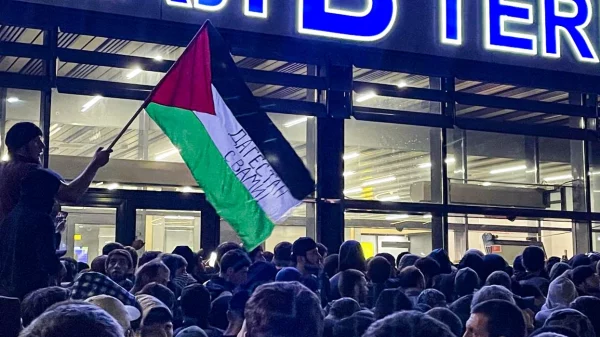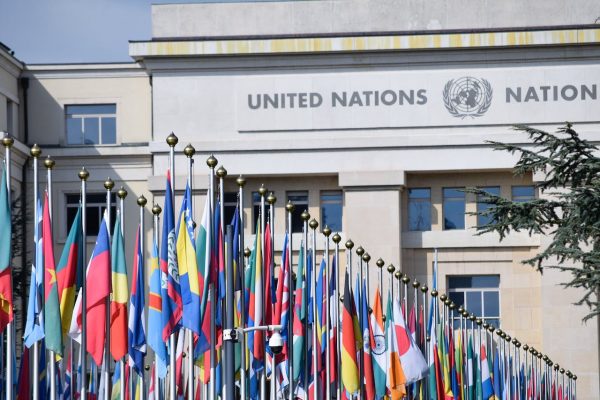Drone attacks within Russian territory have become increasingly common, but a recent incident on Wednesday night occurred in an unexpected location. The city of Pskov in western Russia, situated more than 600 kilometers north of the Ukrainian border, experienced a drone strike that resulted in damage to military aircraft. Notably, Pskov is positioned only a few dozen kilometers away from the borders of Estonia and Latvia.
The source of the drones has not been definitively determined, but if they were launched from the territory of a North Atlantic Treaty Organization (NATO) member state, it would mark an entirely unprecedented occurrence.
Pskov military airbase burning. A fun fact: the airbase is named after Princess Olha, a Kyiv princess appropriated by Russia. She was famous for having revenged her husband's death by sending birds with burning stripes attached to them, destroying enemies. pic.twitter.com/ILkQtzOZtU
— Sergej Sumlenny (@sumlenny) August 30, 2023
The attack prompted strong reactions, such as those from Kremlin propagandist Vladimir Solovyov who expressed his anger on television, suggesting that the drones might have originated from the Baltic States or even Ukraine.
The Russian Defence Ministry ignored the Pskov strikes in its update this morning
But Vladimir Solovyov can’t contain his anger:
"What is happening?!… If we can’t cope with drones, how are we going to cope with F-16s?!" https://t.co/DdxdJG5IoB pic.twitter.com/Mpeiy5Q5Yf
— Francis Scarr (@francis_scarr) August 30, 2023
If the drones were launched from Ukraine, they would have had to traverse Belarus, a Russian ally, undetected for most of the journey.
Speculation has arisen that the drones may have taken off from Estonia or Latvia, potentially without the knowledge of local authorities. There are also suggestions that the rapid response of air defenses might have been hindered due to the possibility that the drones were launched from close proximity to the Kresty military airport in Russia. Nonetheless, these scenarios remain unconfirmed.
Reports from Russian media, particularly the state-run TASS news agency, indicated that approximately 20 drones were involved in the attack. The drones inflicted damage on at least four Il-76 military transport aircraft. Subsequent unverified reports suggested that the number of damaged aircraft could be as high as six.
Mikhail Vedernikov, the Governor of the Pskov Region, personally assessed the situation and indicated that there were no casualties based on preliminary information. He pledged to provide more comprehensive details following a crisis staff meeting.
Approximately 65 firefighters with more than 20 firefighting units were deployed to the scene according to Russian sources. Local media, specifically the Pskovskaya gubernia channel on the Telegram social network, reported that a fire had broken out in the vicinity of the 2nd Brigade of Special Purpose Forces located near the airport.
This incident is part of a larger pattern, as Russia encountered a significant drone attack on the same night. Drone shootdowns were reported in several regions including Bryansk, Oryol, Ryazan, and Kaluga. Additionally, air defenses repelled an air raid on a base of the Russian Black Sea Fleet in Sevastopol.
Although the strike near Pskov is distinctive, it is not the first time such an attack has occurred in the area since the commencement of the Russian invasion of Ukraine. In May, an explosion damaged an oil pipeline building close to the Litvinovo settlement near the Belarusian border. During that incident, Governor Vedernikov mentioned a drone attack involving two drones.
Source: novinky.cz


















